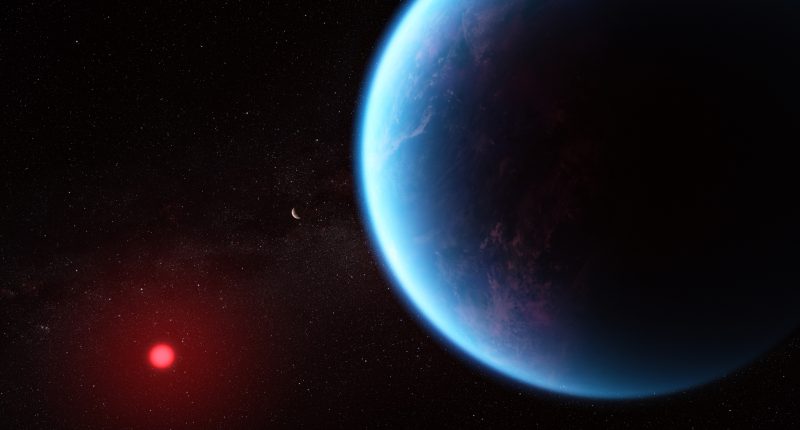We’ve always wondered whether we’re alone in the universe, and a new discovery brings us closer to finding the answer. Researchers are now reporting the strongest signs yet of extraterrestrial biological activity detected on a planet outside our solar system. The claim centers on K2-18b, an exoplanet located 124 light-years away in the Leo constellation, where the James Webb Space Telescope (JWST) has identified the chemical presence of dimethyl sulfide (DMS) and dimethyl disulfide (DMDS) — molecules on Earth known to be produced only by biological processes.
The discovery was made by an international team led by Professor Nikku Madhusudhan from the University of Cambridge, and marks the most compelling evidence to date of life-like activity outside the solar system. “This is the strongest evidence to date for a biological activity beyond the solar system,” Madhusudhan stated, though he emphasized that the findings should be viewed with caution. The presence of DMS and DMDS could indicate microbial life, as these compounds on Earth are primarily emitted by marine organisms like phytoplankton. The findings were published in the peer-reviewed journal Astrophysical Journal Letters.
K2-18b, 700 trillion miles away, is categorized as a sub-Neptune class exoplanet, nearly nine times more massive than Earth and approximately 2.6 times larger. It orbits within the so-called habitable zone of a red dwarf star, where temperatures might allow for liquid water, which is a crucial ingredient for life as we know it. Earlier observations suggested the presence of methane and carbon dioxide, further raising interest in the planet’s potential habitability. Professor Madhusudhan and his team proposed that K2-18b may be a type of “Hycean” world, a term that describes hydrogen-rich planets with global oceans that are larger than Earth but smaller than Neptune. Such environments, the team argues, could support microbial life similar to that found in Earth’s oceans.
For now, the findings do not provide conclusive proof of extraterrestrial life, but is likely to influence the direction of future space exploration and research heavily. Telescopes and missions would be prioritized to study K2-18b and other Hycean worlds further to confirm these findings and search for additional biosignatures (perhaps even validate the long-held belief that life might be common in the universe, and we are not unique and alone in the universe).
While the presence of DMS and DMDS is intriguing, scientists remain cautious. The molecules were detected at concentrations much higher than on Earth—by several orders of magnitude. This raises questions about whether other, non-biological processes could be responsible for their presence. Suggestions include volcanic activity, hydrothermal vents, lightning-induced chemistry, or even cometary impacts—though none of these processes have been confirmed as viable sources of DMS in such quantities under the conditions likely present on K2-18b.
Dr. Nora Hänni, a chemist at the University of Bern, highlighted that DMS has been observed on icy comets, indicating that its presence might not always be biological. “Life is one of the options, but it’s one among many,” she said. Dr. Jo Barstow of the Open University warned that the significance of the discovery demands further proof. “My scepticism dial for any claim relating to evidence of life is permanently turned up to 11,” she stated. Similarly, Dr. Caroline Morley of the University of Texas suggested that “technosignatures”—such as artificial signals—might provide clearer proof of intelligent life than atmospheric biosignatures.
The Tech Portal is published by Blue Box Media Private Limited. Our investors have no influence over our reporting. Read our full Ownership and Funding Disclosure →






